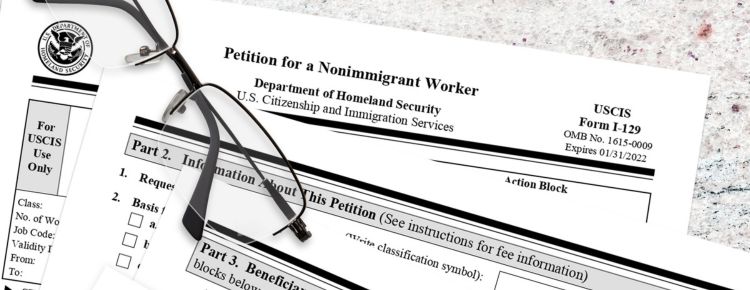Navigating The I 539 Form For Nonimmigrant Status Changes

If you’re a nonimmigrant in the U.S. needing to extend or change your status, navigating the I-539 form is a critical step. This guide simplifies the application process, highlighting what you need to know to file successfully without risking your legal stay. Learn the essentials without the guesswork.
Key Takeaways
- Form I-539 is used by nonimmigrant visa holders in the United States to extend their stay, change their status, or apply for certain benefits, and must be filed before the current authorized stay expires with proper supporting documentation for a financial ability to stay.
- The Form I-539 application process involves providing detailed biographical information, application details for change or extension of status, signatures and declarations, and the correct payment of required filing fees, including changes to biometric services fees after October 1, 2023.
- Applicants should regularly check their application status through a USCIS online account, prepare for potential biometrics appointments, and understand the implications of approval or denial, including the possibility of appealing a denial and the impact on future immigration attempts.
Understanding Form I-539: Purpose And Applicants

Form I-539 is a bridge for nonimmigrant visa holders, offering a legal pathway to change or extend their status. It is meticulously designed by U.S. Citizenship and Immigration Services (USCIS) to facilitate nonimmigrants in maintaining their lawful stay in the country. Various groups frequently rely on Form I-539 for immigration benefit requests, including those seeking to extend their stay, change to another nonimmigrant status, or even become residents of the Commonwealth of the Northern Mariana Islands. The form also serves as a potential stepping stone to a green card application if a nonimmigrant visa holder becomes an immediate relative of a U.S. citizen or green card holder.
Timely filing of Form I-539 is of utmost importance. It is recommended that the form is filed at least 45 days before the current authorized stay expires. However, in some cases, late filings may be excused if the delay was due to extraordinary circumstances beyond the applicant’s control. Navigating this process requires understanding not only the purpose of Form I-539 but also who should file it and what the form accomplishes.
Who Should File Form I-539?
The Form I-539 is not a one-size-fits-all solution but is designed for specific categories of nonimmigrant visa holders. Individuals in the United States on a nonimmigrant visa who need to extend their stay beyond the visa’s expiration date should file Form I-539. Dependents such as a spouse or child of the primary visa holder should also file Form I-539 to maintain their derivative status. The form also caters to children of the primary dependent, requiring them to file Form I-539A in addition to the primary applicant’s I-539 form. Nonimmigrants in the U.S. with J visa status should also remember to check the box in Question 16. This is because their Form I-94 may indicate D/S for duration of status.
What Does Form I-539 Accomplish?
The Form I-539 serves a dual purpose: it allows nonimmigrants to either extend change nonimmigrant status or transition to a different nonimmigrant category. The beauty of this form lies in its flexibility – it allows nonimmigrant visa holders to maintain lawful status while awaiting a decision on a different future status, provided they file for an extension or change of status before their current authorized stay expires.
Eligibility to file Form I-539 is limited to those who:
- Were lawfully admitted to the U.S. with a nonimmigrant visa
- Are not currently in expired status
- Have not committed violations that would make them ineligible.
Step-By-Step Guide To Completing Form I-539

Completing the Form I-539 can be likened to a puzzle. Each piece of information fits into a specific part of the form, and missing even one piece can lead to an incomplete picture. Correctly filling out this form is key to the application’s success. The form is divided into four main sections:
- Biographical information
- Application type
- Processing information
- Additional details about the applicant and the application
The USCIS also offers the option of filing Form I-539 electronically for eligible applicants with an online account number.
Before we delve into the nitty-gritty of each section, it’s worth emphasizing that using the correct form version and requesting the accurate nonimmigrant status is crucial. This underscores the importance of careful review of the filing instructions before submission.
Let’s start examining each section, beginning with the biographical information.
Biographical Information
The first part of Form I-539 requires information about you – the applicant. This section includes:
- Your family name
- Your country of birth
- Your country of citizenship or nationality
- U.S. date format for your date of birth
- Identification numbers like the Alien Registration Number (if available), USCIS Online Account Number, Social Security Number (if applicable), and the I-94 Arrival-Departure Record Number.
The required information for the form includes:
- Full name
- Date of birth
- Gender
- Social security number (if applicable)
- Current address
- Phone number
- Email address
- Most recent passport number
- Issuing country
- Current nonimmigrant status
If the passport has expired after entry into the U.S., details of the expired passport must also be provided. Remember, the form will be rejected if any required fields in Part 1 are missing, emphasizing the importance of a complete application.
Application Details
The second part of Form I-539 is all about your application. Here, you must specify the type of application, which can be:
- Reinstatement to student status
- Extension of stay
- Status change
- Including dependents
The specific nonimmigrant status being requested must also be indicated in Questions 3.b or 3.c of Part 2.
For those seeking a change of status, they must provide the requested new status effective date and indicate the specific change requested. You must also clearly state the total number of people included in the application in Part 2.
If seeking only an extension of your current status, you should accurately mark the appropriate extension box in Part 2 of the form.
Signature And Declaration
The final segment of Form I-539 is dedicated to signature and declaration. Your signature is a vital part of the form. Any unsigned form will be rejected by USCIS. If the applicant is under 14 years of age, a parent or legal guardian is authorized to sign for the child on Forms I-539 or I-539A. Important to note is that digital signatures are not accepted; only wet ink signatures are valid.
The applicant must:
- Sign and date the form in Part 5
- If assisted by an interpreter, the interpreter must also complete and sign Part 7
- If the form was prepared by someone else, including a spouse or parent, that individual must fill and sign Part 7 as a preparer.
Required Documentation For Form I-539

Submitting Form I-539 is not just about filling in the fields on the form; it’s also about providing supporting documentation. This includes a completed and signed Form I-539, the appropriate filing fee, and copies of your passport and nonimmigrant visa or admission stamp. If you’re including dependents in your application, you’ll need to accompany the primary Form I-539 with a completed Form I-539A for each dependent.
Proofs of identity and legal nonimmigrant status are also required, including:
- A copy of the electronic I-94 or the front and back of a paper I-94 card
- Photocopies of the personal data pages of your passport
- A photocopy of your U.S. visa along with any U.S. immigration stamps or endorsements
Alongside these, a written statement outlining the reasons for the extension or change status request should be provided, along with evidence demonstrating your temporary stay and departure plans.
Proof Of Financial Support
Financial stability is a critical factor in any immigration application. As such, you must provide evidence demonstrating your financial ability to support yourself for the duration of your extended stay in the U.S. Bank statements and evidence of income are among the types of documentation accepted to show financial support.
If you’re not relying on your own financial resources, you may submit bank statements or financial details of a family member or friend who will be supporting you. The application must include a written statement that specifically addresses the financial arrangements made for your stay, supported by corresponding evidence.
Evidence Of Current Nonimmigrant Status
Another crucial piece of the puzzle is evidence of your current nonimmigrant status. You are required to include copies of your current visa, admission stamp, or Form I-94 as evidence of your lawfully admitted nonimmigrant status. The Form I-94, Arrival-Departure Record, plays a pivotal role in proving an individual’s lawful admission and nonimmigrant status. You can locate your Form I-94 record number either on the small white card provided upon entry by CBP or by accessing it on the I-94 website.
Submission of these copies of visas, admission stamps, or Form I-94 is crucial to demonstrate compliance with nonimmigrant status requirements.
Filing Fees And Payment Instructions

Filing Form I-539 comes with a cost. The filing fee for Form I-539 is currently $370, as of the time of writing. This fee is subject to change, so it is important to check for any updates before submitting the form. However, it’s important to note that up until October 1, 2023, there was an additional biometric services fee of $85 for each applicant and co-applicant.
Payments for the Form I-539 filing fee should be made payable to the ‘US Department of Homeland Security’. If you mistakenly submit a biometric services fee separately or as part of a combined payment postmarked on or after October 1st, USCIS will return the individual fee or process the application charging only the filing fee.
How To Pay The Filing Fee
Paying the filing fee for Form I-539 can be done online using a credit/debit card or bank withdrawal if you are inside the United States. Credit card payments can also be made using Form G-1450. The credit card payments can be made with cards issued by U.S. banks, including American Express, MasterCard, Visa, Discover, and certain prepaid cards.
If you prefer to pay by mail, you can do so with a check or money order. These must be payable to the U.S. Department of Homeland Security and drawn on U.S. financial institutions.
Biometrics Requirement
As of October 1, 2023, USCIS has made the following changes to the biometric services fees for Form I-539 applications:
- The mandatory $85 biometric services fee has been eliminated for all Form I-539 categories, including H-4, L-2, and E nonimmigrant status extensions or changes.
- As a result of the fee exemption, most Form I-539 applicants are not expected to be scheduled for a biometric services appointment.
- These changes could potentially affect application processing times.
If you incorrectly submit a biometric services fee separately or as part of a combined payment postmarked on or after October 1st, USCIS will return the individual fee or process the application charging only the filing fee, without premium processing.
Timeline And Processing Expectations

The Form I-539 application process is more of a marathon than a sprint. The processing time for Form I-539 can vary based on eligibility and visa category, with certain nonimmigrant categories facing restrictions or ineligibility to extend or change status. While waiting, it’s crucial to utilize the USCIS online account to regularly check the status of your I-539 application as processing times can vary.
Remember, you must file for an extension or change of status before your authorized stay expires to avoid the need to justify any delays as being due to extraordinary circumstances.
Estimated Processing Timeframes
Projecting the processing timeframes for Form I-539 is similar to forecasting the weather. Certain factors, such as form category, service center workload, and individual case complexity, can affect how long you might have to wait for a decision. However, understanding these factors and regularly checking the application status will help set realistic expectations for the I-539 processing timeline.
Checking Your Application Status
In the age of digital technology, tracking the status of your Form I-539 application has never been easier. A USCIS online account allows you to submit forms, pay fees, and most importantly, track the status of your Form I-539 application securely. This account is a critical resource for staying updated about your case at no cost.
A USCIS online account allows real-time monitoring of your application’s progress. The USCIS Online Account Number is a unique identifier that connects you to your filed Form I-539 and allows you to check the status online.
After You File: Next Steps And Possible Outcomes
Completing your Form I-539 is a significant step, but the journey doesn’t end there. After filing, you may need to prepare for a biometric services appointment by bringing your ASC appointment notice to the scheduled biometrics appointment. It’s important to remember that USCIS generally does not approve extensions or changes of status for individuals who fail to maintain their previously accorded status.
Being ‘out of status’ as a result of status expiration or violations prior to filing Form I-539 can make the process to change nonimmigrant status unattainable except under specific circumstances.
Scheduled Biometrics Appointment
While the biometric services fee has been exempted for all Form I-539 applications effective October 1, 2023, some applicants may still be scheduled for a biometrics appointment. If biometrics are deemed necessary, USCIS will send a notice to the applicant with instructions for attending the biometric services appointment. The appointment is typically set after the form has been filed and any applicable fees, before the exemption, were paid.
To attend the scheduled biometrics appointment, applicants must bring the ASC appointment notice, which is Form I-797C.
Approval, Denial, And Appeals
The outcome of your Form I-539 application can take one of three paths: approval, denial, or appeal. If your application is denied, you must leave the U.S. However, if your current visa is still valid, you have until the expiration date on your I-94 to depart. If you fall out of status, you may have to leave the U.S. to avoid negative implications for future re-entry.
However, USCIS may approve an untimely filed application to extend your stay, assuming the delay was due to extraordinary circumstances beyond your control. Remember, each case is evaluated individually by USCIS officers, who are not obligated to follow previous application outcomes when making their decisions.
Navigating Complex Scenarios
Much like life, the Form I-539 application process can present unexpected challenges. Changes in USCIS policies or form instructions can influence the outcome of pending applications. Using the incorrect version of Form I-539 may result in the application being rejected or denied, and the filing fees will not be refunded in case of denial.
For applicants submitting Form I-539 from outside the U.S., the available payment methods may differ and should be verified with the relevant International USCIS office or U.S. Embassy or Consulate.
Changes While Application Is Pending
Just as change is an inevitable part of life, it’s also a constant in the Form I-539 application process. Changes in personal circumstances or immigration laws while the application is pending can affect the outcome. However, a late filing may be excused if it can be shown that the delay was caused by extraordinary events that were beyond your control.
For a delay to be considered excusable, you must also demonstrate that the length of time taken to file after the delay was reasonable.
Employment Authorization During Processing
It’s important to keep in mind that while your Form I-539 application is pending, you still need to comply with the conditions of your present status. This means you may not be authorized to work or attend school until your application has been approved. If you violate the terms of your status, such as by working without authorization before your Form I-539 is approved, you may fall out of status and consequently become ineligible for a change or extension of status.
However, under certain circumstances, you can remain in the U.S. for up to 240 days while your I-539 application is pending. If you wish to work while your Form I-539 application is pending, you must first obtain an Employment Authorization Document (EAD) by filing Form I-765, and you cannot begin employment until the EAD is approved.
Summary
Navigating the Form I-539 application process can seem like a daunting task. However, by understanding the purpose of the form, who should file it, and what it accomplishes, you’re already halfway there. The journey involves a step-by-step guide to completing the form, providing the required documentation, paying the filing fees, and understanding the timeline and processing expectations. After filing, you must be prepared for the possible outcomes and know how to navigate complex scenarios that may arise. Remember, each journey is unique, and each case is evaluated individually. Stay informed, stay prepared, and you’ll be able to navigate this journey successfully.
Frequently Asked Questions
What is Form I-539 used for?
Form I-539 is used to apply for a variety of nonimmigrant statuses, including B-1/B-2 visitor status, F-1 student status, and H-4 dependent status. It is also used to request an extension of stay or a change to another nonimmigrant status.
How long does it take for I-539 to be approved?
The processing time for USCIS form I-539 can take from 5 to 14 months, depending on the type of nonimmigrant status requested. It is best to check the USCIS website for the most current processing estimates.
Can I stay in U.S. while I-539 is pending?
Yes, you can stay in the U.S. while your I-539 is pending, as you’re placed on an “authorized stay” until a decision is made. This allows you to remain in the U.S. for up to 240 days while your application is pending.
What is the difference between I 485 and I-539?
The main difference between I-485 and I-539 is that I-485 is for adjusting status to that of a legal permanent resident, while I-539 is for certain transitions or extensions of stay within the United States. Therefore, while the I-539 addresses non-immigrant status, the I-485 is for immigrant status.
Who should file Form I-539?
If you are in the United States on a nonimmigrant visa and need to extend your stay, you should file Form I-539. Dependents of the primary visa holder, such as a spouse or child, should also file this form to maintain their derivative status.
Related Blog

Check USCIS Case Status Online | Quick Guide
Are you seeking to check your USCIS case status without the hassle of phone calls and in-person appointments? The USCIS online portal provides a seamless and convenient way to access your immigration case status. This blog post will guide you through the process of effortlessly checking your USCIS case status online, helping you stay informed […]

H-1B Visa Stamping In USA News
The U.S. State Department’s proposed plan enabling H1B visa holders to renew their H-1B visa stamping within the USA itself will save certain H-1B visa applicants countless hours of international travel and money spent on travel abroad, H1B visa holders will no longer be required to exit the United States and visit a consular post […]

Navigating The I-129 Petition Process For Nonimmigrant Workers
If you’re puzzling over Form I-129 for hiring nonimmigrant workers in the U.S., look no further. This article demystifies the filing process, requirements, and fees, equipping employers with the knowledge to proceed confidently. Discover the specifics of completing the form, the essential documents you’ll need, and how to avoid common errors, ensuring your petition stands […]


